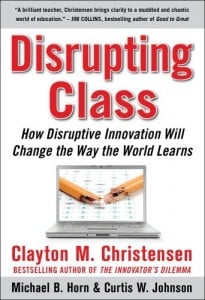I love photography. I always have. I’ve always been the person who’s rarely in any photos because I’m the one taking them. Teaching photography is an  absolute pleasure and I enjoy sharing my passion for the subject with my students.
absolute pleasure and I enjoy sharing my passion for the subject with my students.
Last New Year’s Eve, I decided to take on the challenge of taking a photo a day for the duration of 2010. Not surpisingly, I learned about the photo a day challenge through Twitter. My first photo, at the right, is one of my favourites so far. I started because I love taking photographs, but I also though that it might be an interesting assignment for my photography students and I like to try things out before I bring them into the classroom.
 I decided to follow @dailyshoot on Twitter because they tweet simple, good photo assignments each day. It helps to keep motivated and inspired. You can even tweet your photo with a link and they’ll add it to their Daily Shoot site. I usually try the daily shoot assignment, but, if the opportunity presents itself, I veer off and capture images of my choice.
I decided to follow @dailyshoot on Twitter because they tweet simple, good photo assignments each day. It helps to keep motivated and inspired. You can even tweet your photo with a link and they’ll add it to their Daily Shoot site. I usually try the daily shoot assignment, but, if the opportunity presents itself, I veer off and capture images of my choice.
I use my Flickr account to archive my daily photos. I also joined two groups on Flickr: the 2010/365photos group (a group largely made up of  edubloggers which started in 2008) and the Art Ed 365/2010 (another group similiar to the first, but specifically for art teachers). I already had a Flickr account, so it was just a matter of finding the groups (which I learned about from my PLN on Twitter) and joining. Both groups contain members that I either follow on Twitter or that have a blog I subscribe to. I purposefully joined groups that would extend my existing PLN experience and I’ve found that being a part of the group has made my commitment more real.
edubloggers which started in 2008) and the Art Ed 365/2010 (another group similiar to the first, but specifically for art teachers). I already had a Flickr account, so it was just a matter of finding the groups (which I learned about from my PLN on Twitter) and joining. Both groups contain members that I either follow on Twitter or that have a blog I subscribe to. I purposefully joined groups that would extend my existing PLN experience and I’ve found that being a part of the group has made my commitment more real.
The benefits I’ve experienced so far are:
- a greater awareness, a constant searching, for that awesome photo
- some great photos that I’m really proud of
- a neat visual record of my year so far
- an understanding of what it feels like to have to take photos in the same place every day. I get it now when my photo students come in and say ‘there’s nothing to take photos of in this school’, whereas before I’d privately think, ‘how could there be nothing to take photos of in the whole school?’
The struggles I’ve had so far:
- finding inspiration in the same spaces day after day. I think it’s time to go on some long drives to take advantage of the beautiful natural setting surrounding me. Looking at my photos so far, very few are outside of my house or my classroom, even though I take my camera with me everywhere I go. I want to change that.
- remembering to take the photos. I haven’t missed a day yet although I haven’t posted all the photos online, but I have forgotten until late at night and then I was stuck taking a photo just because I had to. Not surprisingly, those don’t turn out very well.
- technical difficulties. I’m getting a dark spot in the lower right corner of my recent photos. It only shows up in certain close up situations with the flash and it’s ruined a few good photos already.
- uploading the photos to Flickr, then naming them, tagging them, adding them to the group pool, etc. Is there an easier way to archive the daily photo? There probably is, but I haven’t found it yet, so I usually only upload every couple of weeks or so.
In this time of limitless online professional development, the daily photo is a  valuable and worthwhile learning experience. I’ve really enjoyed it so far and I think it will make for a valuable photography assignment for my students. I wonder about others’ experience so far and I think in a classroom setting, where the students can sit and talk about their successes, struggles, etc. face to face, it will be even better.
valuable and worthwhile learning experience. I’ve really enjoyed it so far and I think it will make for a valuable photography assignment for my students. I wonder about others’ experience so far and I think in a classroom setting, where the students can sit and talk about their successes, struggles, etc. face to face, it will be even better.



 The blogs I read fall into one of three categories. Blogs in the first category are those related to using technology in the field of education, such as
The blogs I read fall into one of three categories. Blogs in the first category are those related to using technology in the field of education, such as  assignment. It’s
assignment. It’s  For those who’ve missed the boat or are not yet at the party, Twitter is a free social networking and microblogging site. It’s all founded on the idea of answering the simple question “What are you doing right now?” One tidbit I think worth mentioning is that Twitter was created by the same guy that created
For those who’ve missed the boat or are not yet at the party, Twitter is a free social networking and microblogging site. It’s all founded on the idea of answering the simple question “What are you doing right now?” One tidbit I think worth mentioning is that Twitter was created by the same guy that created 
 If you’re a teacher involved in the community of educators online, you may have heard of the book
If you’re a teacher involved in the community of educators online, you may have heard of the book 




